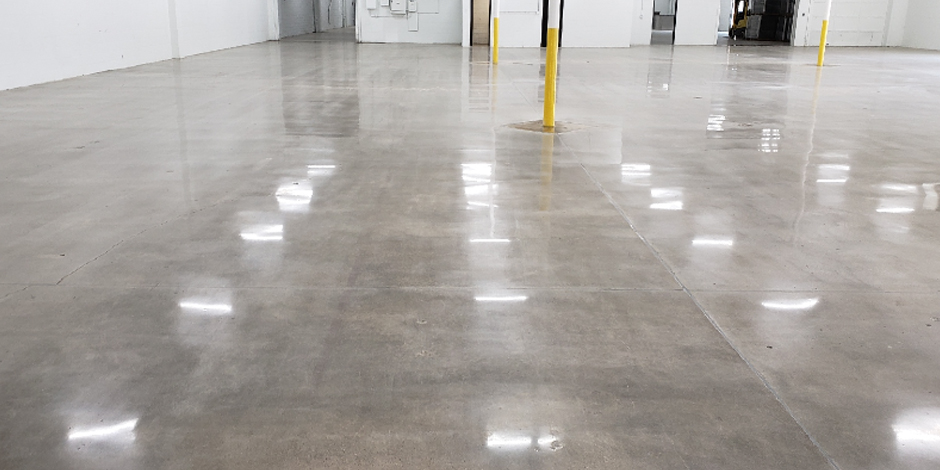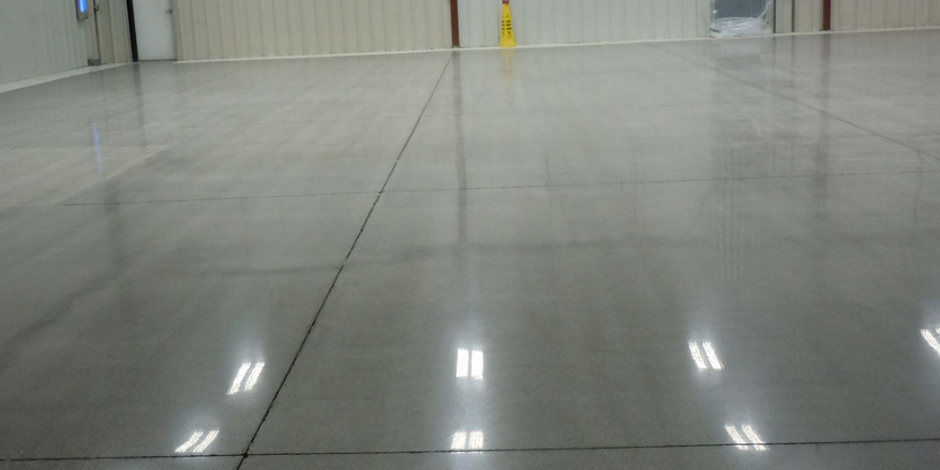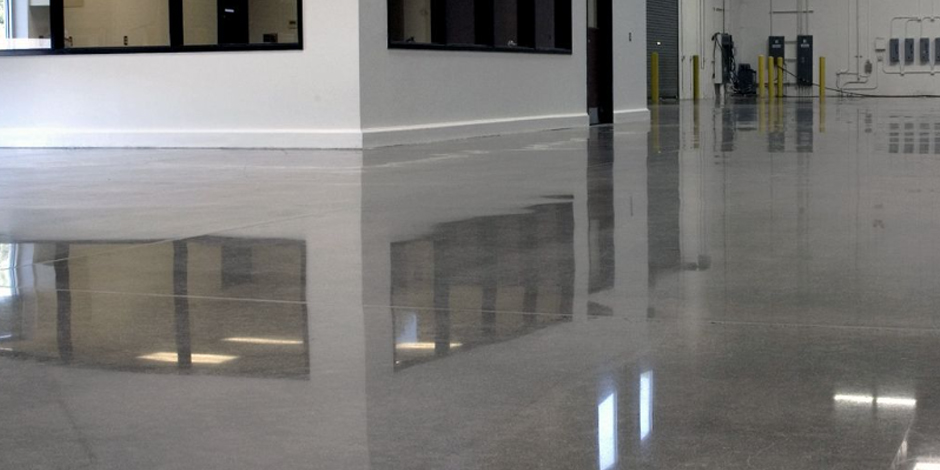Concrete grinding and polishing is a highly effective flooring solution that can provide numerous benefits for residential, commercial, and industrial applications. When performed correctly, grinding and polishing can result in a smooth and aesthetically pleasing finish that resembles polished stone. Not only does this provide a more appealing appearance, but it also enhances the durability and longevity of the concrete flooring.
One of the main advantages of concrete grinding and polishing is the ease of maintenance. The smooth surface created by the process eliminates the need for waxing or coating, making the flooring much simpler to clean and maintain. Additionally, the durability of polished concrete is superior to that of unpolished concrete. Polished concrete is less likely to wear and tear over time and is more resistant to moisture, which can help to extend its lifespan.
However, it’s important to note that achieving the desired results of concrete polishing requires the proper procedures and techniques. Failure to follow the correct steps can result in a finish that is uneven, dull, or otherwise unsatisfactory. That’s why it’s crucial to work with experienced professionals who have the necessary knowledge, skills, and equipment to perform the task effectively.
Avoid These Common Errors When Polishing and Grinding
There are several common mistakes that people make when polishing and grinding their concrete floors, which can prevent them from achieving the desired quality finish. These mistakes can range from simple oversights to more significant errors that require extensive rework.
- Using the wrong bond for the concrete: Selecting the correct bond for your diamond tooling is crucial to achieving optimal results when grinding concrete. Using the wrong bond type can cause a range of issues, including premature tool wear, glazing, and poor grinding performance.
One of the most common mistakes in diamond tooling selection is choosing a bond that is not suitable for the type of concrete being ground. If you use a hard bond diamond tool for grinding soft concrete, the tool may not cut into the surface, causing the diamonds to heat up and glaze over. Conversely, using a soft bond diamond tool on hard concrete can result in the tool wearing out quickly, leading to the need for frequent replacement.
To avoid these issues, it’s essential to follow the general rule for diamond bond selection in concrete grinding. This rule states that you should use hard bond diamonds for soft concrete, soft bond diamonds for hard concrete, and medium bond diamonds for medium concrete. The bond type is crucial because it determines how quickly the diamonds will wear and how much material will be removed during grinding.

- Setting the grinder speed too high: The speed of the grinder is a crucial factor in achieving optimal grinding performance when working with concrete. Setting the grinder speed too high in an attempt to increase production rates can lead to several problems that can affect the quality of the finished surface.
One of the main issues with setting the grinder speed too high is that it can cause the diamonds to overheat and glaze over. This can prevent the diamonds from cutting properly, resulting in an uneven or poorly polished surface. In some cases, the diamonds may not cut at all, leading to an ineffective grinding process that wastes time and resources.
To avoid these problems, it’s essential to find the right speed setting for the grinder that provides the best performance and optimum production rates. This requires careful consideration of factors such as the hardness of the concrete, the diamond tooling being used, and the desired finish quality.
In general, lower grinder speeds are better for grinding harder concrete surfaces, while higher speeds are more effective for softer surfaces. However, it’s important to note that the speed setting should always be adjusted to match the specific conditions and requirements of each job.
Working with an experienced professional who has the necessary expertise and equipment can help ensure that the grinder speed is set correctly and that the grinding process is efficient and effective. This can help to maximize production rates while also achieving the desired finish quality and extending the lifespan of the diamond tooling.
- Using low-quality diamond tooling: When it comes to diamond tooling, it’s important to prioritize quality over price. Choosing low-quality diamonds may seem like a cost-effective option in the short term, but it can ultimately lead to a subpar end result. Poor quality diamonds do not wear down evenly, which can cause your tool to wear down faster and produce uneven surfaces or scratches.
In contrast, high-quality diamond tooling will provide a longer lifespan and a more consistent performance. The diamonds used in these tools are carefully selected and undergo rigorous testing to ensure their quality and durability. By investing in a high-quality diamond tool, you can expect to achieve smoother and more polished finishes with greater precision and accuracy.
It’s worth noting that the quality of the diamond is not the only factor to consider when selecting diamond tooling. The bond between the diamond particles and the tool matrix, as well as the design and manufacturing process of the tool, also play a critical role in the tool’s performance and longevity.
Ultimately, the choice of diamond tooling will depend on the specific application and requirements of the job. However, by prioritizing quality over price, you can ensure that you are investing in a tool that will provide reliable and consistent results over time.

- Not fixing scratches immediately upon seeing them: Scratches on your floor may seem like a minor issue, but ignoring them and not addressing them promptly can lead to bigger problems down the road. Scratches can worsen over time, especially if they are justify untreated, which can compromise the structural integrity of the floor and make it more difficult to fix in the future.
It’s essential to inspect the floor regularly as you grind and polish to detect any scratches and deal with them promptly. By doing so, you can identify the source of the scratches and address them using the same level of grit that produced them. This ensures that the scratches are not just masked but are genuinely removed from the surface of the floor.
Addressing scratches as soon as possible is also important for maintaining the appearance and value of your floor. Scratches can be unsightly and detract from the overall aesthetics of the room. Furthermore, if you plan to sell or rent the property in the future, the condition of the floor can significantly impact its value.
In summary, addressing scratches on your floor promptly is essential for maintaining the structural integrity and aesthetics of your floor. Regular inspections and immediate action can help prevent scratches from becoming a bigger issue and ensure that your floor remains in good condition for years to come.
- Starting work right away without inspecting the floor: Starting work on a concrete surface without inspecting it first can lead to long-term damage to your diamond tools. Above-grade materials, such as bumps or raised surfaces, can cause your diamond segment to knock off, resulting in uneven and damaged surfaces.
It’s crucial to inspect the concrete surface thoroughly before beginning any work. This allows you to identify any above-grade materials that may be present, such as paint, glue, or other residues. These materials should be removed or sanded down to the floor’s level by hand sanding to prevent damage to your diamond tools.
Additionally, failing to remove above-grade materials can compromise the adhesion of coatings or overlays to the surface, which can lead to delamination and other issues down the line. It’s essential to take the time to prepare the surface properly before beginning any work to ensure the best possible results.
In summary, inspecting the concrete surface before starting work is critical for preventing long-term damage to your diamond tools and ensuring the best possible results. By removing or sanding down any above-grade materials by hand, you can avoid costly mistakes and ensure that your work is done to the highest standard.
- Not understanding the customer’s expectations: As a contractor working with concrete polishing and grinding, it’s not uncommon to encounter customers who have unrealistic expectations about the results they want to achieve. However, failing to understand and manage these expectations can lead to dissatisfaction and misunderstandings down the line.
To avoid these issues, it’s crucial to educate your customers about the attributes of concrete and what is possible to achieve through the polishing and grinding process. This includes explaining the limitations of the process and tempering their expectations when necessary.
For example, some customers may expect the concrete to have a perfectly uniform color and texture, which may not be achievable depending on the condition of the floor and other factors. In these cases, it’s essential to have an open and honest conversation with the customer about what can and cannot be done.
Additionally, understanding the customer’s needs and preferences is also critical for managing expectations effectively. By asking the right questions and actively listening to their concerns, you can gain a better understanding of what they are looking for and provide recommendations that align with their goals.
In summary, understanding and managing customer expectations is a crucial aspect of working with concrete polishing and grinding. By educating customers about the process, tempering expectations when necessary, and listening to their needs and preferences, you can build trust and deliver results that meet their expectations.







 Content Writing
Content Writing Video Marketing
Video Marketing Graphic Design
Graphic Design Lead Magnet Creation
Lead Magnet Creation Content Marketing
Content Marketing